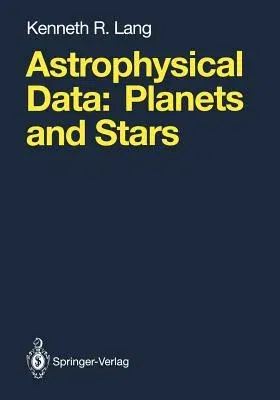Kenneth R Lang
(Author)Astrophysical Data: Planets and Stars (Softcover Reprint of the Original 1st 1992)Paperback - Softcover Reprint of the Original 1st 1992, 30 March 2012

Qty
1
Turbo
Ships in 2 - 3 days
In Stock
Free Delivery
Cash on Delivery
15 Days
Free Returns
Secure Checkout
Print Length
937 pages
Language
English
Publisher
Springer
Date Published
30 Mar 2012
ISBN-10
1468406426
ISBN-13
9781468406429
Description
Product Details
Author:
Book Edition:
Softcover Reprint of the Original 1st 1992
Book Format:
Paperback
Country of Origin:
NL
Date Published:
30 March 2012
Dimensions:
25.4 x
17.78 x
4.8 cm
ISBN-10:
1468406426
ISBN-13:
9781468406429
Language:
English
Location:
New York, NY
Pages:
937
Publisher:
Weight:
1628.4 gm

